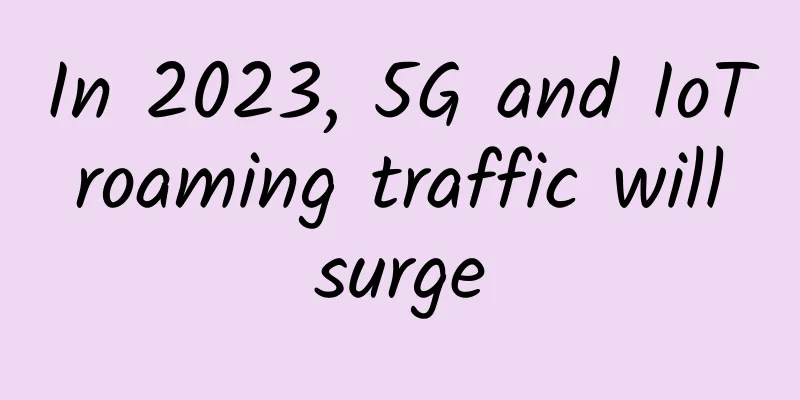How O-band technology can help overcome implementation barriers from 5G to 6G

|
The 5G communications protocol was developed in 2017, and while the service is not yet generally available, research into the next generation 6G technology is already underway. As consumer devices evolve, more and more people are benefiting from faster speeds. But what is the current state of 5G implementation? What challenges lie ahead for network operators on their path to improving customer coverage? Furthermore, can new O-band technology bypass these obstacles and even lay the foundation for 6G's data demands? Each generation of mobile networks integrates the use cases of its predecessor and adds new features for consumers. For example, 2G, released in 1990, introduced digital voice calls and text messages, while 3G added web browsing capabilities on smartphones. 5G began to become popular around the world around 2020 and brought faster mobile broadband and lower latency. 6G, currently in research, builds on the need for greater data storage to provide capabilities and faster bandwidth speeds for applications such as extended reality (XR), edge computing or smart cities. 5G Fast TrackThe OECD said that during the pandemic, data network operators' traffic increased by 60% compared to before the pandemic. To meet this demand, network operators accelerated the development of 5G, enabling Europe to complete about 65% of its planned promotion goals ahead of schedule. The goals set by the European Commission include achieving 100% coverage of at least low-frequency 5G (Sub-6Ghz) in all regions by the end of 2030, and 100% coverage in urban areas by 2025. Meanwhile, the UK government announced plans in February 2022 to simplify the way local councils share information with network providers about the use of public buildings and roadside infrastructure in order to increase 5G coverage. 6G is comingIn the next three to five years, the priority for operators will be to deploy 5G. However, 6G is already being researched, with the first commercial deployments expected to be achieved as early as 2026 in large cities with strong telecom investments, such as Beijing, London, Tokyo and New York. However, 6GFlagship estimates that full deployment may occur in the 2030s. Compared to 5G, 6G requires a five-fold reduction in latency and several-fold increase in bandwidth. These improvements will enhance virtual reality: higher data rates and lower latency will result in a more immersive experience. Areas such as the Internet of Things and artificial intelligence will also be able to make faster and more informed decisions. Another benefit of 6G is improved positioning accuracy. It can use radar-like technology to achieve positioning accuracy of less than one centimeter. It can also work in complete darkness, fog or rainy conditions. This is particularly useful for self-driving cars, which rely on detailed knowledge of their surroundings to make safe and accurate navigation decisions. Overcoming 6G’s energy challengesWhen using low-band 5G, operators can use the same infrastructure as 4G and just optimize it. However, when increasing the frequency to higher bandwidths, such as 24-100GHz in the millimeter wave spectrum, more base stations need to be added in closer proximity. This means that high-band 5G and 6G are only feasible in urban areas. It is this necessity to add base stations that leads to several problems. First, adding base stations in densely populated areas has caused opposition from residents who do not want the towers close to their homes. Finally, more base stations means higher energy consumption, which is a huge problem for operators considering the current energy crisis. The way forwardTo meet the growing demand for low-latency data while reducing energy consumption, network providers must upgrade their existing infrastructure. Many network providers still rely on 10Gbps and 25Gbps connections, using fiber optic cables to carry data to and from base stations. However, upgrading to speeds such as 100Gbps is becoming increasingly necessary and, over time, will become the new standard. Laying more cables is not always the best way to achieve this goal. Cost, disruptiveness, and time constraints make this option unfeasible. One promising alternative is transceivers and multiplexers, which can be upgraded to 100Gbps using existing cable infrastructure. Multiplexers increase data transmission speeds by providing multiple channels for optical signals. Instead of sending one signal down one optical fiber, optical multiplexing or wavelength division multiplexing (WDM) combines multiple signals at different wavelengths to maximize the use of a single fiber. O-band technology refers to the "original band" of wavelengths, which is 1260-1360nm. Signals at the corresponding frequencies have minimal scattering, making the O-band the best choice for high-speed Internet communications. By sending multiple wavelength signals in this range simultaneously, network managers can increase data transmission speeds on existing cables from 10Gbps to 100Gbps without increasing energy consumption or maintenance costs. In addition, the use of passive multiplexers will eliminate the need for active powering devices in the aggregation nodes connecting the base stations, further reducing energy consumption. This will allow the optical connection to be maintained at all times, keeping latency to a minimum. As 5G networks continue to roll out, and 6G capabilities get closer, innovative solutions are needed to help network operators meet the growing demand for data speeds. O-band technology is and will be an important tool in their arsenal to minimize infrastructure costs and maximize data speeds. |
<<: Highlights | Speech content of the 39th GTI seminar (2/2)
>>: Three trends driving cyberattacks in 2024
Recommend
HTTP interview, 99% of interviewers like to ask these questions
[[322727]] Differences between HTTP and HTTPS HTT...
[5.1] DogYun: 30% off on all dynamic clouds, 20% off on classic clouds, 10 yuan free for every 100 yuan recharge, 100 yuan off for independent servers per month
DogYun (狗云) sent this year's May Day event pl...
IBM releases 'quantum-safe' tool with end-to-end encryption to protect against quantum computing attacks
On May 15 , IBM launched a set of tools called &q...
V5.NET: 20% off Hong Kong international servers, E3-1230/8GB/240G SSD/15M monthly payment starts from 340 yuan
V5.NET has launched a new promotion, currently of...
F5 security experts talk about DevSecOps: security by design
If someone asks, "What is changing the techn...
How long can the operators’ hard-earned V-shaped rebound last?
The latest data released by the Ministry of Indus...
How to explain network engineering technologies such as STP, HSRP, etc. in a simple and understandable way?
During an interview, for example, I was asked abo...
What is CDN = The Mysterious Embarrassment of CDN | The Most Fearful Thing is the Air Suddenly Going Quiet
The road to advanced popular science of the obscu...
H3C wins bid for Qingdao Metro to boost the development of Qingdao's urban rail transit
Recently, New H3C Group, a subsidiary of Tsinghua...
How can operators easily get on the battlefield in the 5G era? 4.5G will take on the heavy responsibility
With the arrival of 5G, maintaining 2G, 3G, 4G, a...
In the 5G era, how can telecom operators lead the future through IoT services?
Major global telecom operators have been explorin...
Five signs SCVMM isn't right for your data center
Today, System Center Virtual Machine Manager (SCV...
BuyVM: 1Gbps unlimited traffic VPS monthly payment starting from 3.5 Canadian dollars, Las Vegas/New York/Miami/Luxembourg and other data centers
BuyVM is a long-established foreign VPS hosting c...
China Academy of Information and Communications Technology: In November, domestic 5G mobile phone shipments reached 20.136 million units, accounting for 68.1%
On December 10, the China Academy of Information ...









